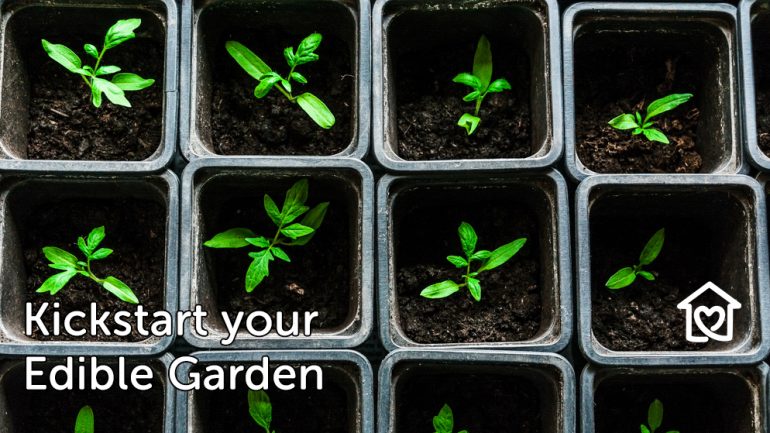Bring gourmet flavors into your own home with the following herbs and vegetables, chosen for how useful they are in cooking and how quickly they can be harvested. Plant now or in spring, depending on your choice of plants.
Herbs
Fresh herbs are highly fragrant, beautiful garnishes, and they offer potent flavorings for food dishes and cocktails. For this reason, herbs are the first thing a culinary gardener should start with. Plant herb – in containers or directly in the ground – close to the kitchen so you can easily grab a few leaves while cooking.
Try | Basil · Chives • Cilantro • Dill • Rosemary
Salad Greens
Lettuce has a short shelf life once picked, and gourmet lettuce mixes are one of the more expensive items in the grocery store. The good news is you can grow your own lettuce mix at home. Lettuce should be grown in cool weather or with light shade to avoid the bitter flavors that come with hot weather. Spring’s cool weather is ideal for starting lettuce.
Try | Arugula • Spinach • Swiss Chard • Nasturtium • Mizuna
Peas
Edible-pod peas (snow & snap) are delicious straight off the vine and are a favorite sweet, crispy snack for gardeners. They take a bit longer to develop than herbs or salad greens, but your efforts will be rewarded with pods that taste delicious on their own, cut up in a salad, blended into a dip, or thrown into a hot soup.
Try | ‘Oregon Sugar Pod Il’Snow Pea · Sugar Ann’Snap Pea
Beans
Beans are yet another high-yield, versatile vegetable for the culinary gardener. Some varieties taste best when eaten fresh, while others can be grown and dried on the vine to be used for winter stews. At the height of summer, when plants are prolific, it’s best to harvest mature beans every day to keep the plants producing.
Try | Scarlet Runner Bean · Christmas Lima Bean
 Tomatoes
Tomatoes
The gateway drug for culinary gardeners, tomatoes are wonderfully forgiving and a perfect vegetable for first-time gardeners. After tasting a homegrown tomato, there’s no going back. With more than 15,000 known varieties, you can pick from ones that are fresh and tart to super sweet or ones that taste best cooked or fresh.
Try | ‘Sun Gold’• Pink Brandywine’
Peppers
Chili peppers give a flavor boost and heat to cuisines around the world. They become spicier as they age on the plant. Additionally, the less water it receives, the more capsaicin (the chemical responsible for the heat) it produces. Wear gloves while harvesting and cutting chili peppers to protect against skin irritation.
Try | Shishito • Padrón • “NuMex Twilight’ • Anaheim · Pepperoncini
Radishes
Radishes are crisp and peppery, and some varieties can be harvested in as little as three weeks. Like peppers, radishes become spicier the larger they get and the hotter the weather. Spring, therefore, is one of the best times to start planting radish seeds.
Try | ‘Easter Egg’• Watermelon Radishes • ‘Scarlet Globe’
Garlic
Garlic is a must in any cook’s kitchen. The flavor and pungency is unrivaled and serves as the base for almost every dish. Yes, garlic can be bought in the store. However, you should consider planting a few cloves in the spring to truly enjoy the butteriness of homegrown garlic.
Sweet Potatoes
Sweet potatoes can be bought at the supermarket, but growing the more exotic varieties can be very rewarding for a gourmet gardener. You’ll need a plot of space that you can dedicate to growing them until autumn, when most sweet potatoes are ready to harvest.
Try | Okinawa · Jewel • *T65′. Stokes
